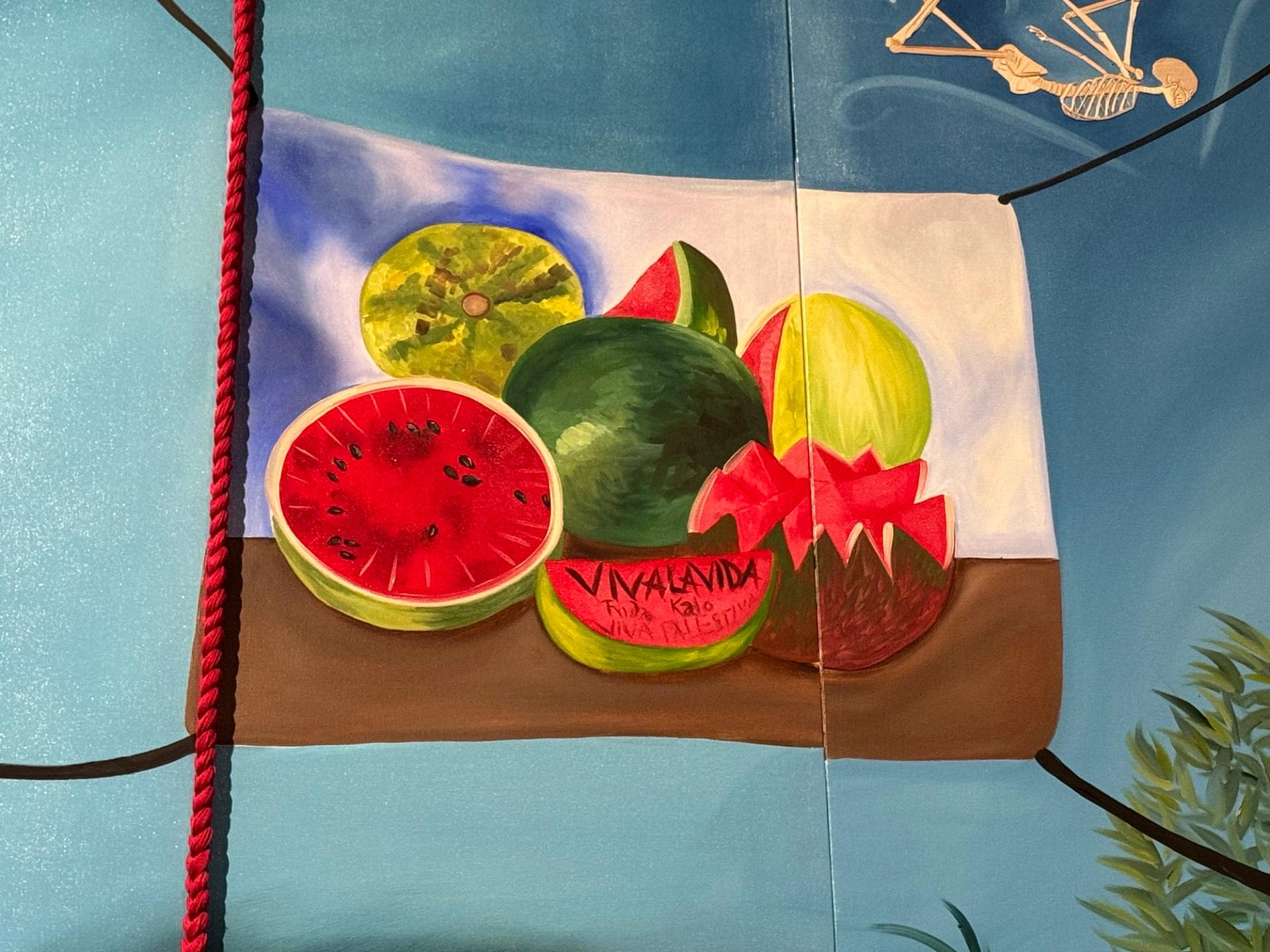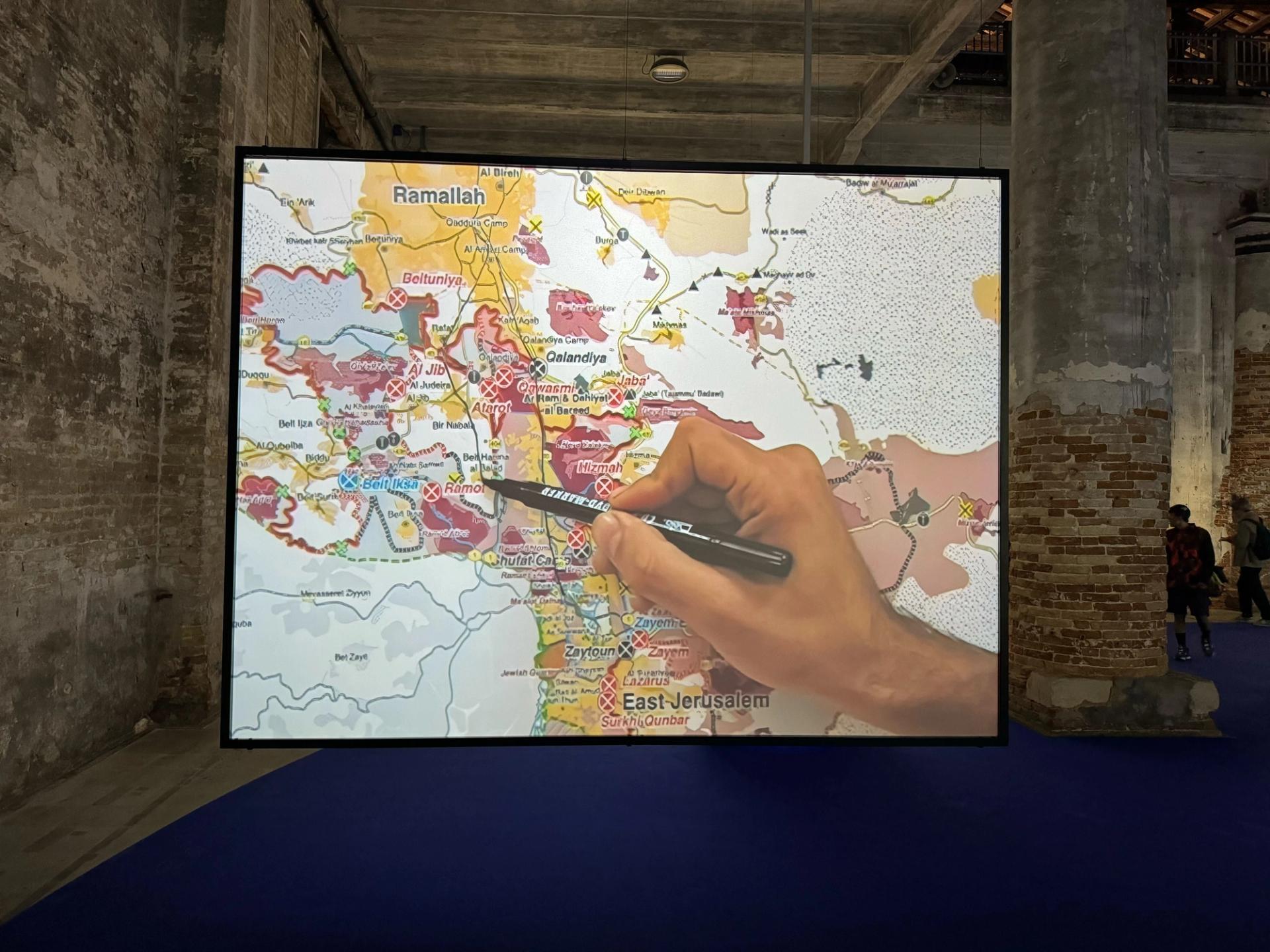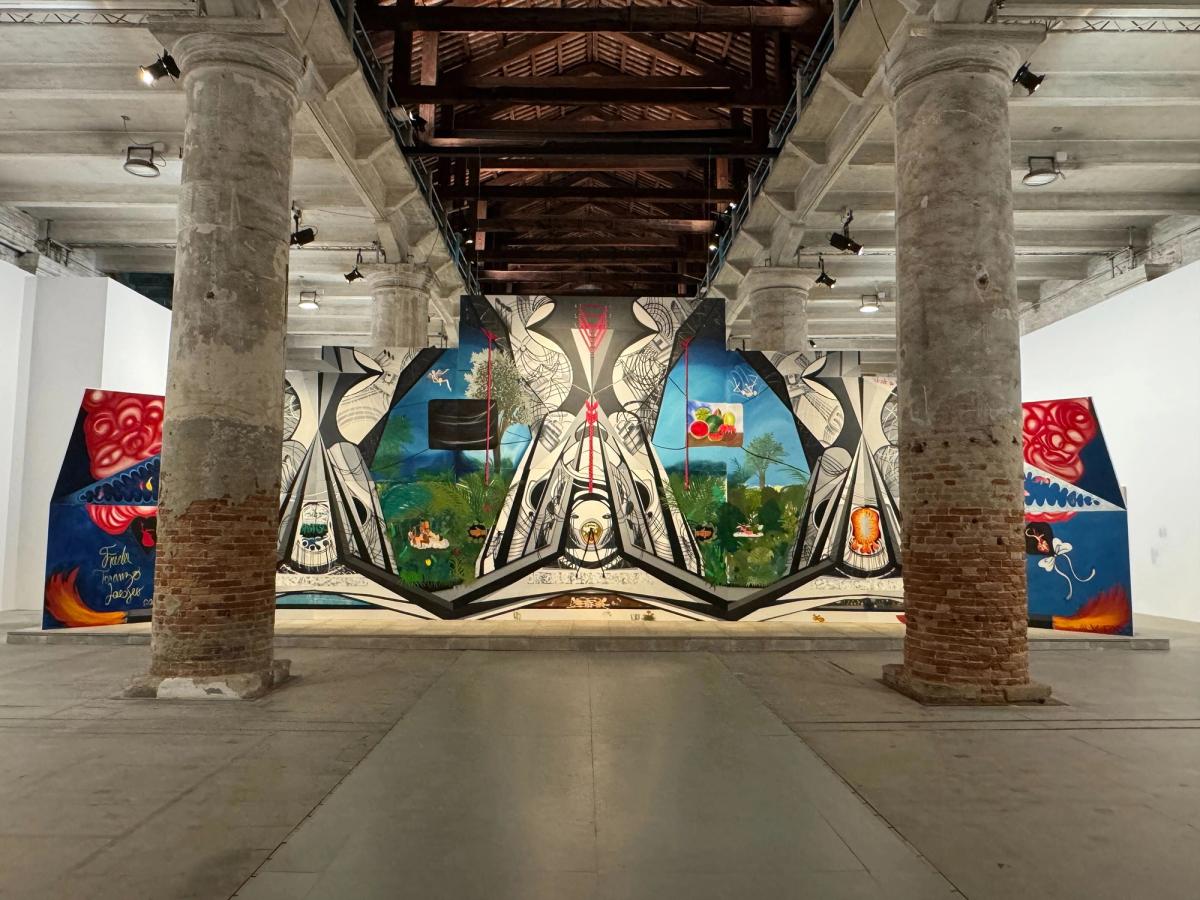Multiple artists taking part in the 60th Venice Biennale have featured Palestine in their work and installations as the art world continues to grapple with the Israel-Hamas war.
As attendees entered the Venice Arsenale on Tuesday (16 April) for the Biennale’s media preview day, the first work they were confronted with was Rage Is A Machine In Times of Senselessness (2024), a massive oil and embroidery on canvas by Mexican artist Frieda Toranzo Jaeger. References to Palestine are woven throughout.

Watermelons in Rage Is A Machine In Times of Senselessness The Art Newspaper
She included, for example, eight depictions of watermelons, which have been used as a symbol of Palestinian resistance since the Israeli government criminalised displaying the flag of Palestine in Gaza and the West Bank after the six-day-war in 1967. To evade the ban, Palestinians have used images of watermelons, which share the flag’s colours red, black, green and white. Israel lifted the ban in 1993, though some restrictions were put back in place last year.
On one watermelon and elsewhere on the canvas, she painted the phrase “viva Palestina, Spanish for “Long live Palestine”. On the back of the canvas, meanwhile, the artist embroidered an anatomical heart and below it scrawled “Hearts that unite against genocide”.
In another room of the sprawling Arsenale complex is a presentation of Marco Scotini’s Disobedience Archives, a collection of videos that deal with art and political action. One of the 39 screens shows scenes from Palestinian filmmaker Khaled Jarrar’s 2002 documentary Notes on Displacement, which follows a family fleeing violence in Damascus, Syria through the Mediterranean in the hope of reaching Germany. The family’s matriarch, Nadira, is an elderly woman from Palestine who first became a refugee at the age of 12.
Nearby plays a performance of The Brightness of Greedy Europe, a puppet theatre show from 2022 put on by Peruvian artist Daniela Ortiz, featuring the image of a small Palestinian flag in the corner of the screen that reads “boycott Israeli pavilion, Free Palestine”! (On Tuesday morning, the artist chosen to represent Israel, Ruth Patir, announced she and the presentation’s curators would refuse to open the pavilion until a ceasefire and hostage release agreement is reached between Israel and Hamas.)
Palestine is also referenced in the Arsenale with Bouchre Khalil’s video collection, The Mapping Journey Project (2008-11), in which people forced to cross borders illegally illustrate the routes that they took. One of eight videos playing simultaneously shows a young Palestinian man mapping out the convoluted way he travels from Ramallah to East Jerusalem, keeping Israeli checkpoints in mind.

The Mapping Journey Project (2008-11) by Bouchre Khalil The Art Newspaper
In a work displayed in Spain’s national pavilion in the Giardini, meanwhile, the Peruvian artist Sandra Gamarra compares the treatment of Palestine to the discrimination of transgender people. “Transbody is to normative heterosexuality what Palestine is to the West: a colony whose extension and form is perpetuated only through violence”, Gamarra painted onto a work.
At Belgium’s pavilion, a pamphlet was on display with a heading that read “the Palestinian pavilion”. It calls for the art world to “organise and resist on multiple fronts to halt the genocide and prevent it as a future”. It is not an official part of the pavilion, a representative told The Art Newspaper, but was printed on site.


